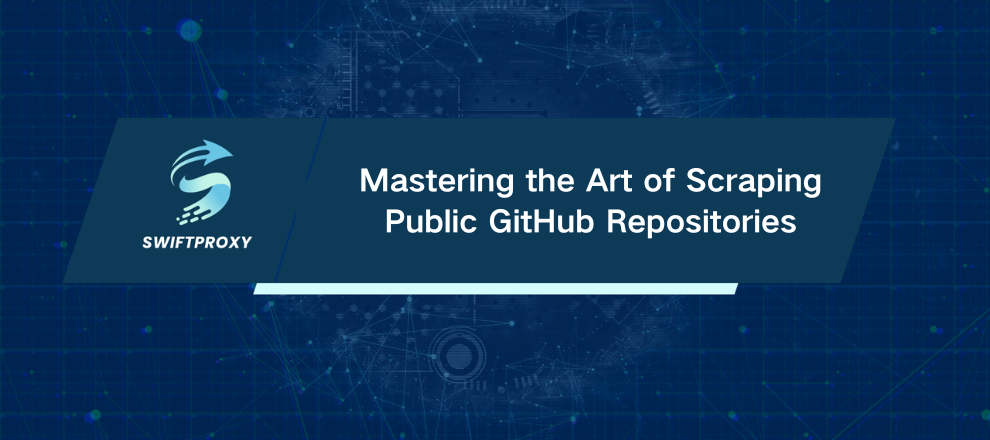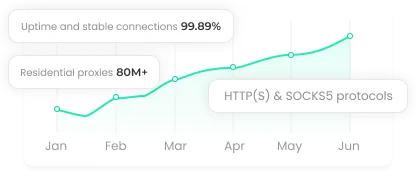Mastering the Art of Scraping Public GitHub Repositories

If you want to extract valuable insights from GitHub's vast universe of public repositories, Python is your best friend. Scraping GitHub repositories can unlock trends, uncover hidden gems, and fuel smarter tech decisions. But how exactly do you do it—cleanly, efficiently, and without banging your head against the wall?
Let's dive in.
Why Scrape Public GitHub Repositories
GitHub isn't just a code vault; it's a dynamic tech pulse. Scraping repositories lets you:
Track emerging technologies: Monitor stars, forks, and repo activity to spot trends in languages, frameworks, and tools shaping the future.
Harvest learning resources: Open-source projects are goldmines for examples, solutions, and real-world implementations.
Stay competitive: Understanding how top projects evolve informs your own development and strategic choices.
The bottom line? Scraping GitHub is a powerful way to keep your finger on the technology pulse.
Key Python Tools You'll Need
Python makes scraping approachable with its rich ecosystem. Here's your toolkit:
Requests: The go-to for making HTTP requests and fetching web pages.
BeautifulSoup: Your parsing powerhouse, perfect for extracting data from messy HTML.
Selenium (optional): For scraping dynamic pages that require interaction like clicks or login.
For most GitHub scraping, Requests and BeautifulSoup will do the job neatly.
Step-by-Step Guide to Building Your GitHub Scraper
1. Set Up Your Python Environment
First, install Python. Create a virtual environment to keep dependencies tidy.
2. Install Required Libraries
Inside your activated environment, run:
pip install beautifulsoup4 requests
3. Fetch the GitHub Repository Page
Pick a repository you want to analyze. For example:
url = "https://github.com/TheKevJames/coveralls-python"
response = requests.get(url)
This gets the raw HTML content you'll parse.
4. Parse HTML With BeautifulSoup
Feed the page content into BeautifulSoup to navigate the DOM tree.
from bs4 import BeautifulSoup
soup = BeautifulSoup(response.text, 'html.parser')
You now have a powerful toolset to select and extract exactly what you need.
5. Analyze the Page Structure
Open your browser's developer tools (F12) and inspect elements carefully. GitHub's HTML isn't always straightforward — many classes are generic, so look for unique attributes or consistent patterns. This groundwork saves hours of debugging later.
6. Extract Key Repository Details
Here's how to grab the essentials:
# Repository Name
repo_title = soup.select_one('[itemprop="name"]').text.strip()
# Current Branch
main_branch = soup.select_one('[class="Box-sc-g0xbh4-0 ffLUq ref-selector-button-text-container"]').text.split()[0]
# Latest Commit Timestamp
latest_commit = soup.select_one('relative-time')['datetime']
# Description
bordergrid = soup.select_one('.BorderGrid')
description = bordergrid.select_one('h2').find_next_sibling('p').get_text(strip=True)
# Stars, Watchers, Forks
def get_stat(selector):
element = bordergrid.select_one(selector)
return element.find_next_sibling('strong').get_text(strip=True).replace(',', '')
stars = get_stat('.octicon-star')
watchers = get_stat('.octicon-eye')
forks = get_stat('.octicon-repo-forked')
7. Grab the README File (If Available)
The README often holds the key to understanding the repo.
readme_url = f'https://github.com/TheKevJames/coveralls-python/blob/{main_branch}/readme.rst'
readme_response = requests.get(readme_url)
readme = readme_response.text if readme_response.status_code != 404 else None
8. Organize Your Data
Collect everything into a dictionary for easy export.
repo = {
'name': repo_title,
'main_branch': main_branch,
'latest_commit': latest_commit,
'description': description,
'stars': stars,
'watchers': watchers,
'forks': forks,
'readme': readme
}
9. Export as JSON
Store your scraped data in a JSON file for downstream use.
import json
with open('github_data.json', 'w', encoding='utf-8') as f:
json.dump(repo, f, ensure_ascii=False, indent=4)
Wrapping It Up
You're now equipped to build your own scraper that pulls relevant, actionable data from GitHub repositories. Whether you want to analyze popular projects or monitor technology trends, this approach lays a solid foundation.
Keep in mind that GitHub provides an official API which is usually easier and more stable to use. Web scraping should be considered a backup option rather than your primary choice. It's also important to respect GitHub's servers by avoiding excessive requests and always following their terms of service.





















































